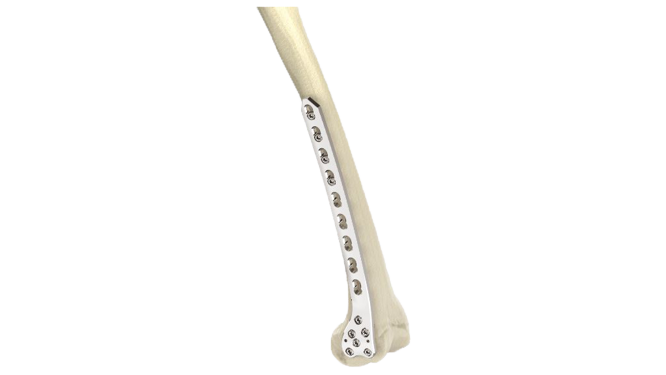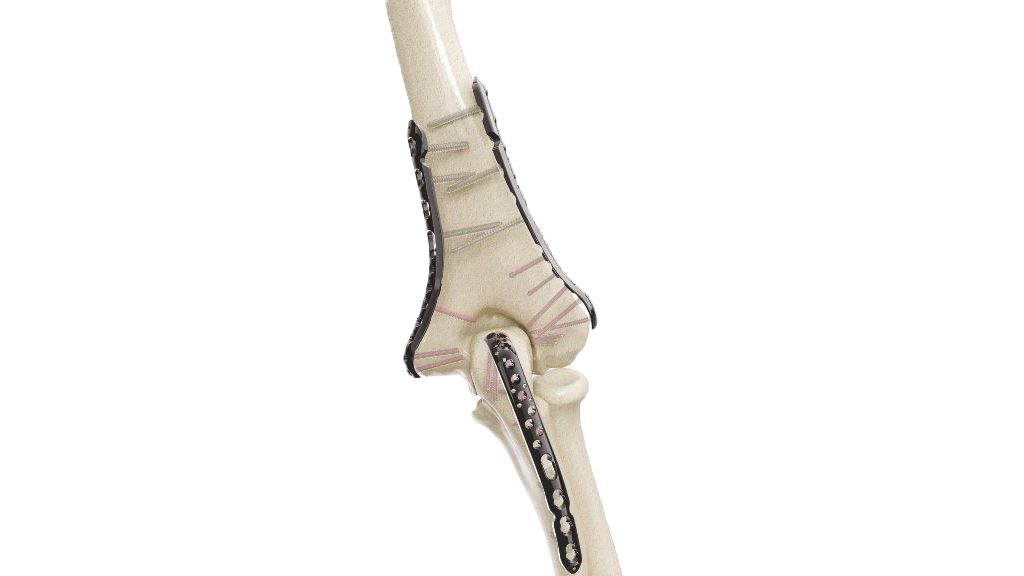Compact Hand Plates - ASLP 2.4 mm Adaption Plate
Product Overview
The 2.4 mm Adaption Plate , a versatile orthopedic implant, is designed to provide precise and adaptable solutions for various hand and finger surgical procedures. Renowned for its reliability and flexibility, this implant offers exceptional stability and support in a wide range of applications, from fracture fixation to deformity correction and joint fusion. Trusted by orthopedic surgeons worldwide, the 2.4 mm Adaption Plate signifies a commitment to excellence in orthopedic care, ultimately enhancing the quality of life for patients requiring hand and finger surgical interventions.
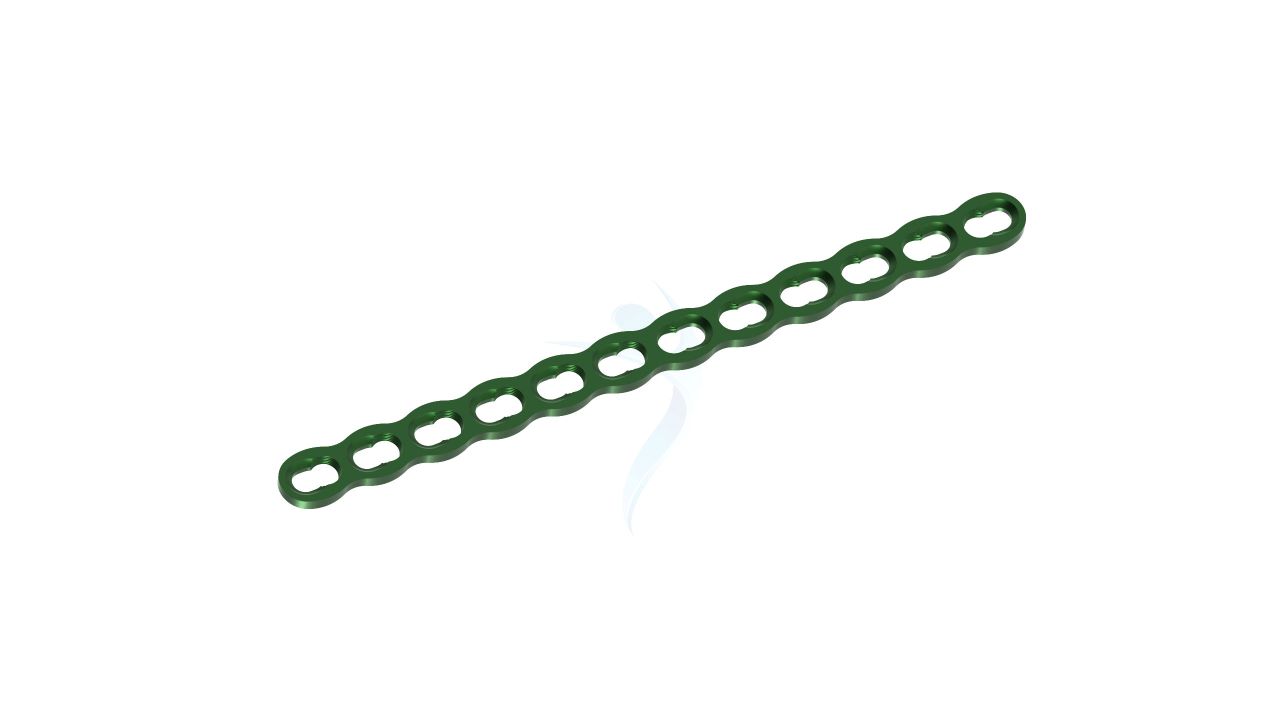
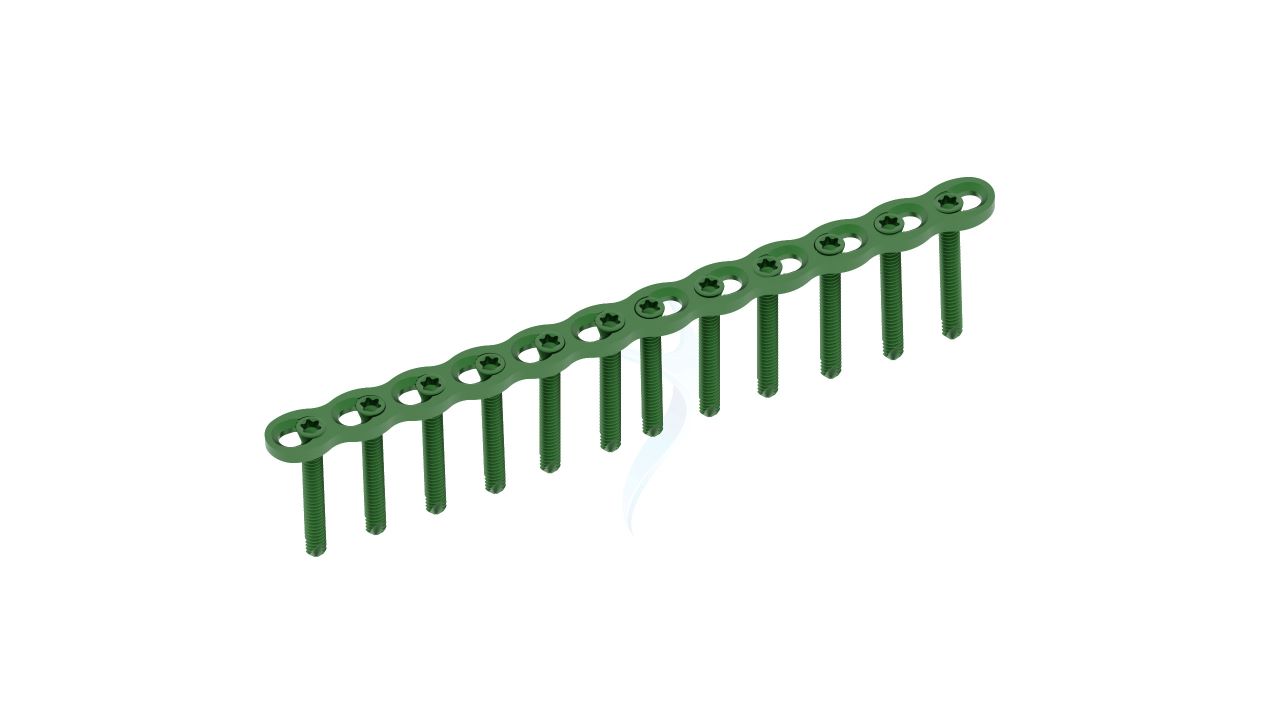
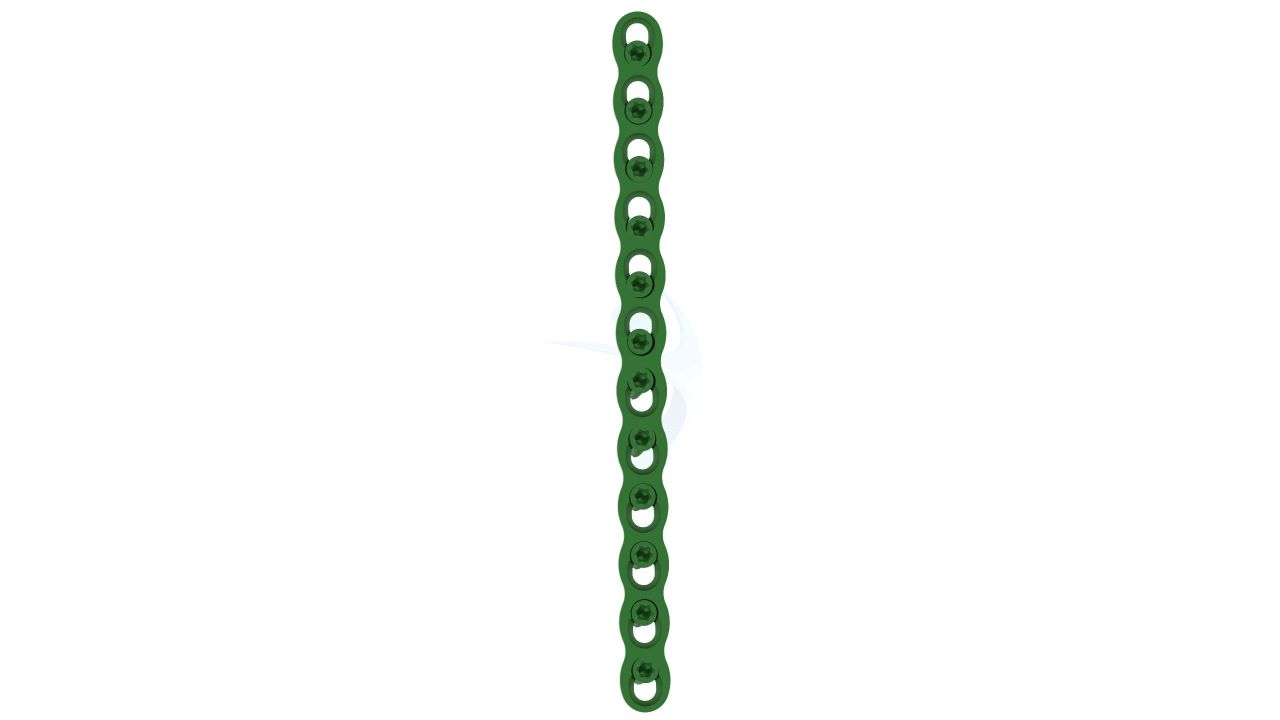




Product Uses
- Fracture Fixation : Stabilizing and immobilizing fractures of the hand and fingers, including metacarpal and phalangeal fractures.
- Malunion Correction : Correcting malunions, where a bone has healed in an incorrect position or alignment.
- Non-Union Fractures : Assisting in the treatment of non-union fractures by providing stability and promoting bone healing.
- Bone Deformity Correction : Addressing bone deformities, including angular or rotational deformities in the hand and fingers.
- Arthrodesis (Joint Fusion) : Immobilizing joints to promote fusion, often used in cases of severe arthritis or instability.
- Complex Hand Trauma : Addressing complex hand trauma involving multiple fractures or significant soft tissue damage.
Product Specification
- Material Composition : Crafted from high-quality, biocompatible material Titanium alloy to ensure optimal compatibility with the human body and long-term durability.
- Plate Design : Distinguished by its adaptable design, the Adaption Plate caters to various surgical needs in hand and finger procedures, offering flexibility and stability.
- Profile Thickness : Engineered for a harmonious balance between robust stability and a discreet, tissue-friendly profile, promoting patient comfort and minimizing irritation.
- Screw Hole Array :Equipped with an array of strategically positioned holes to accommodate orthopedic screws, enabling precise and secure fixation.
- Surface Finish : Characterized by a smooth, polished surface finish that reduces friction and contributes to the comfort of surrounding tissues.
- Compatibility : Designed to seamlessly integrate with conventional orthopedic instruments and surgical techniques, ensuring ease of use for surgeons.
Compact Hand Plates - ASLP 2.4 mm Adaption Plate Sizes
Comprehensive Guide for Compact Hand Plates ASLP 2.4 mm Adaption Plate
- Patient Evaluation : Conduct a thorough pre-operative evaluation of the patient, including medical history, physical examination, and any necessary imaging studies (X-rays, CT scans, etc.).
- Informed Consent : Obtain informed consent from the patient, explaining the surgical procedure, potential risks, benefits, and alternatives.
- Anesthesia Consultation : Collaborate with the anesthesia team to determine the appropriate anesthesia method for the patient (local, regional, or general anesthesia).
- Implant Selection : Choose the 2.4 mm Adaption Compact Hand Plate (ASLP) based on the specific surgical requirements and patient anatomy.
- Surgical Planning : Plan the surgical approach, incision location, and necessary tools and equipment.
- Patient Positioning : Position the patient comfortably on the operating table, with the affected hand or finger appropriately exposed.
- Anesthesia Administration : Administer the chosen anesthesia method to ensure the patient is pain-free and comfortable during the procedure.
- Incision and Soft Tissue Dissection : Make a precise incision at the predetermined surgical site, exposing the bone or joint that requires treatment.
- Stability Check : Verify the stability and alignment of the bone or joint fixation with the plate in place. Make any necessary adjustments.
- Plate Placement : Securely position the 2.4 mm Adaption Compact Hand Plate (ASLP) over the bone or joint, ensuring it conforms to the anatomical contours.
- Wound Closure :Close the incision meticulously by suturing the skin and underlying tissues, if required. Ensure proper alignment of wound edges for optimal healing.
- Dressing and Immobilization : Apply sterile dressings over the incision site and immobilize the treated hand or finger using an appropriate splint, cast, or immobilization method as determined by the surgeon.
- Recovery and Post-Operative Care : Transfer the patient to the recovery area and provide appropriate post-operative care, including pain management, monitoring, and follow-up instructions.
- Follow-Up Appointments : Schedule follow-up appointments with the surgeon to assess the patient's progress, monitor wound healing, and address any post-operative concerns.
- Wound Care and Activity Restrictions : Instruct the patient or their caregiver on proper wound care, dressing changes, hygiene, and activity restrictions to support the healing process.


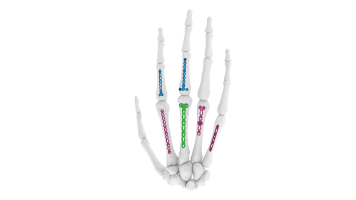
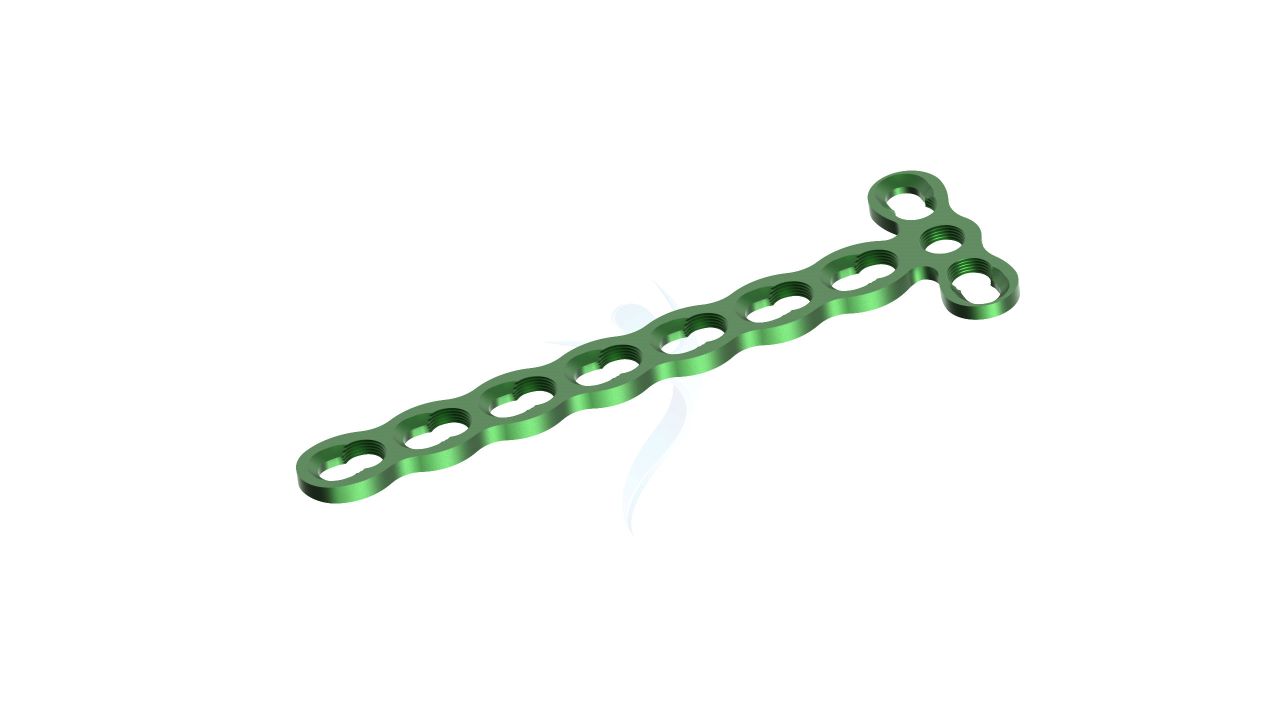
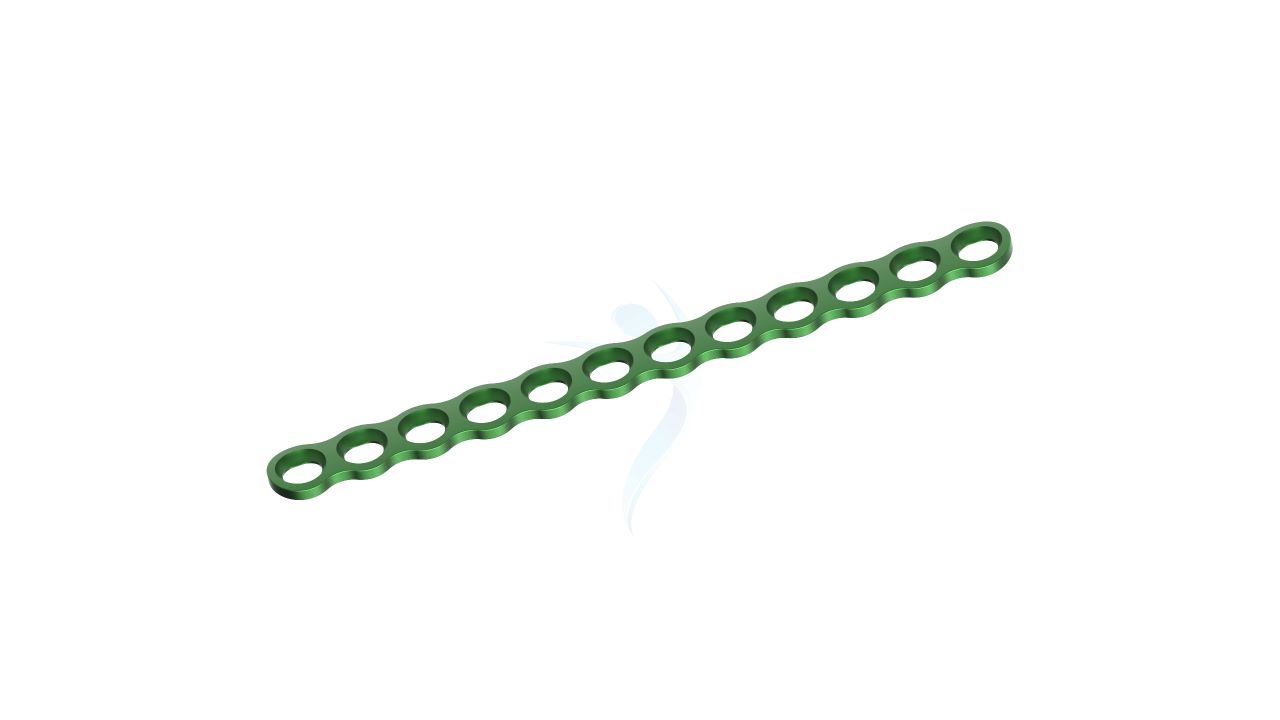
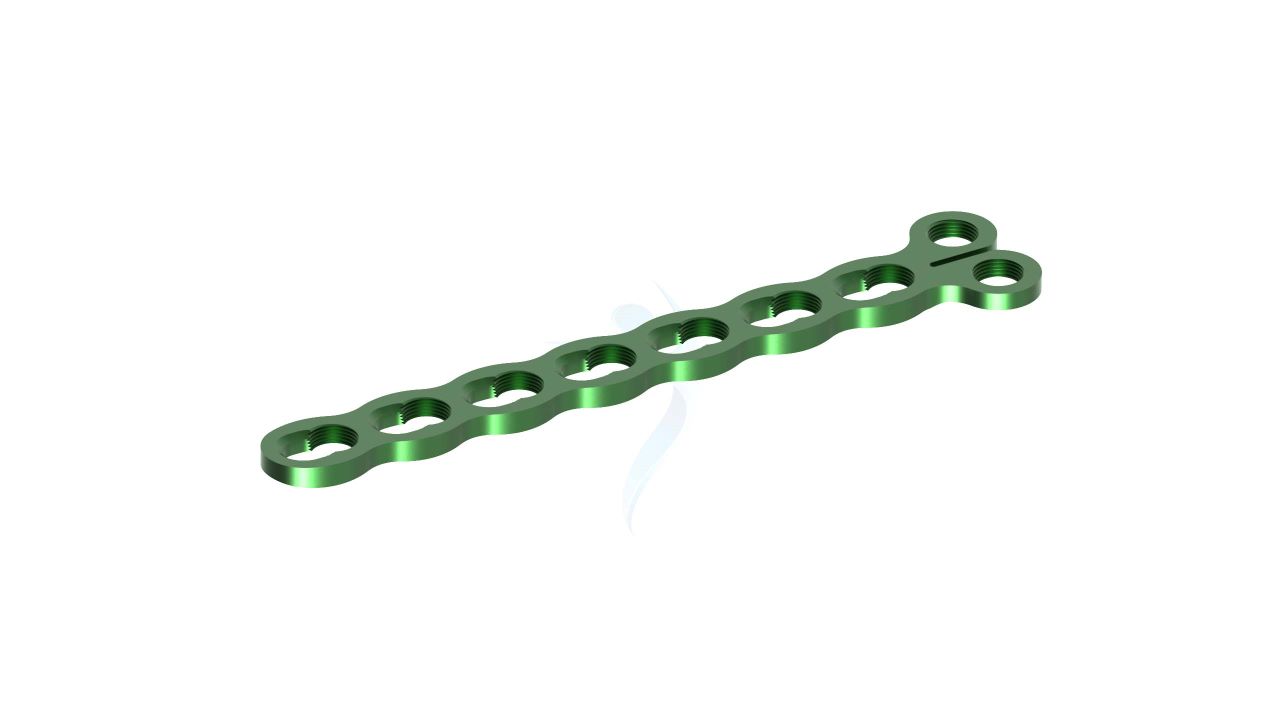

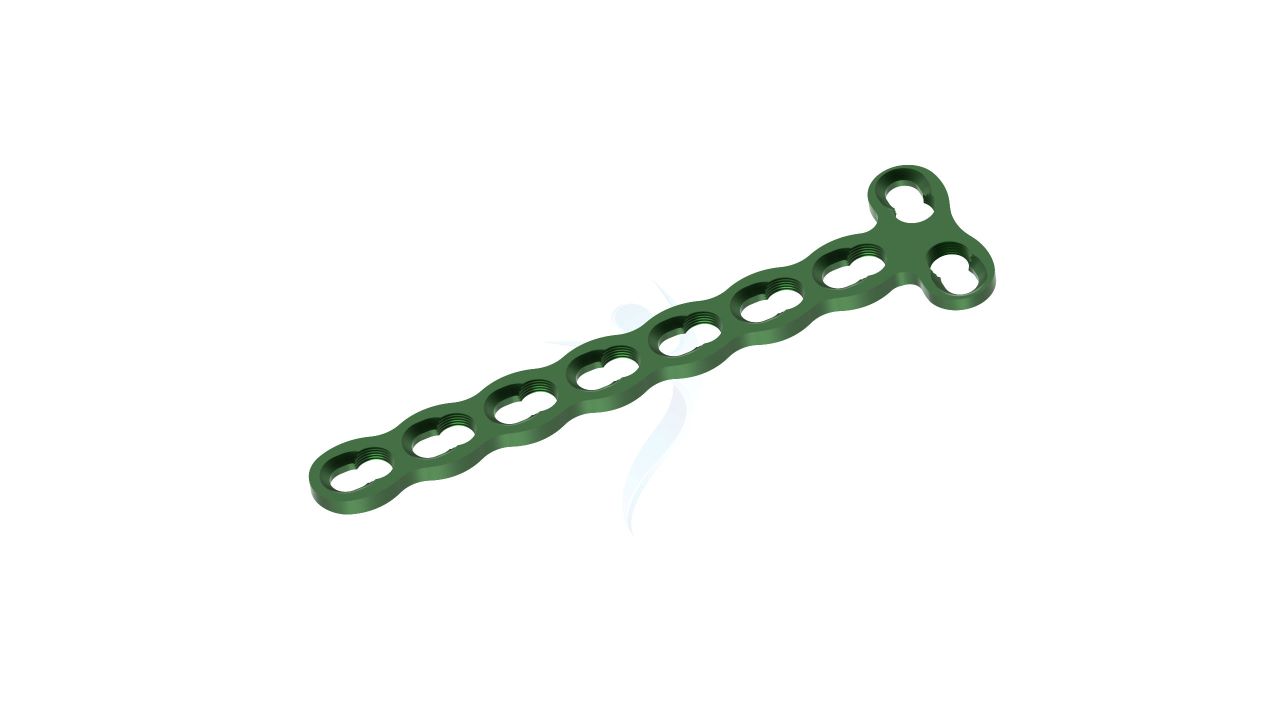
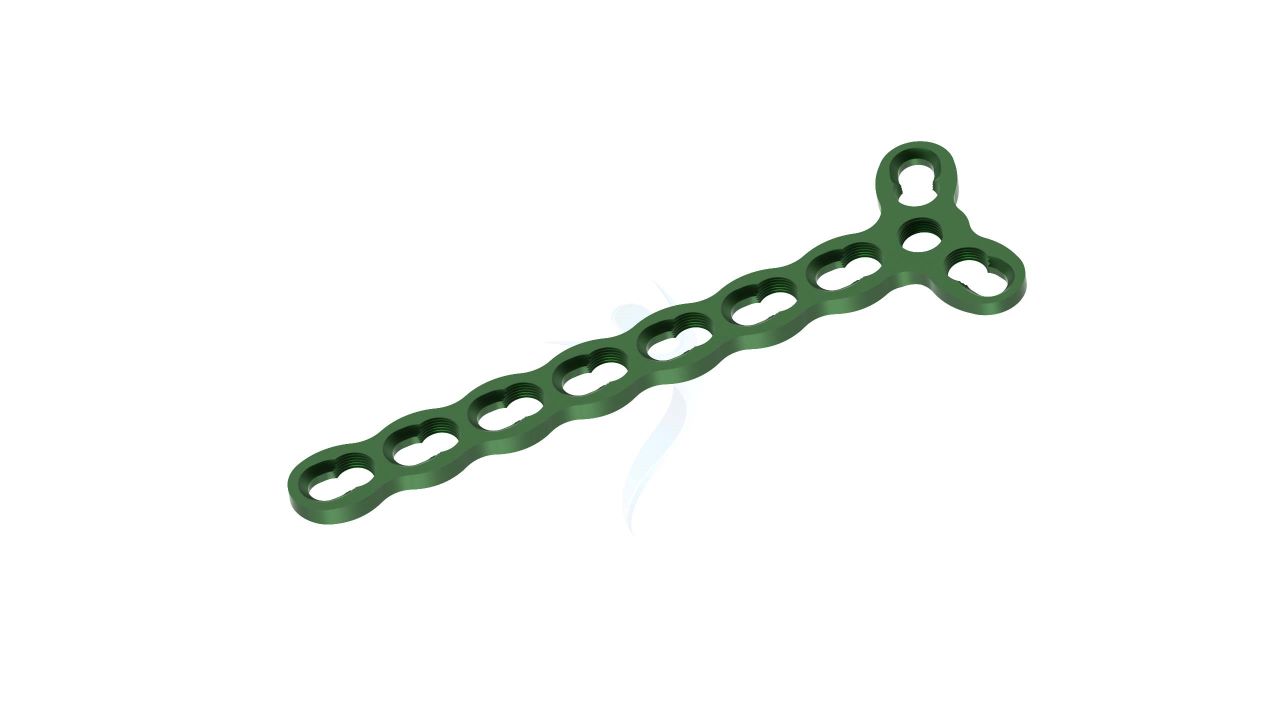

.png)

